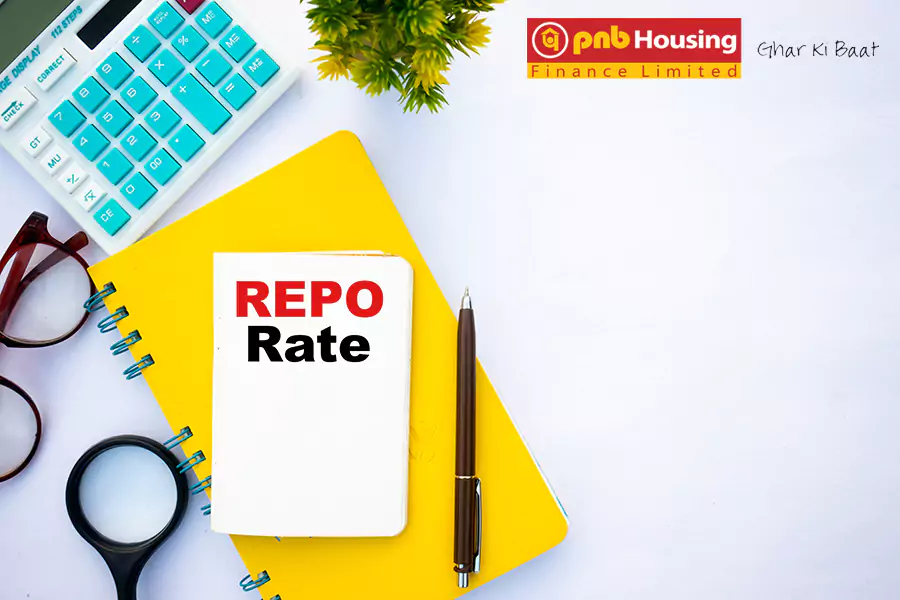Introduction
In this financial world, property owners are continually seeking innovative methods to maximise the value of their assets. One such method that is gaining traction is lease rental discounting (LRD).
This financing solution allows property owners to utilise their rental income to secure loans, providing immediate capital for various needs. In this blog, we will explore everything you need to know about lease rental discounting.
Understanding Lease Rental Discounting
Lease rental discounting is a loan offered against rental income derived from leased properties. Financial institutions, like PNB Housing, assess the property's future rental income and provide a loan based on that assessment. This approach benefits property owners by converting a steady rental income into immediate funds.
For instance, Ms. Teena, the owner of a shopping complex in Delhi, utilised lease rental discounting (LRD) to access funds to renovate her property. By leveraging her future rental income as collateral, she secured a loan, enabling her to upgrade the complex, attract premium tenants, and subsequently increase her rental earnings.
How to Avail LRD?
The journey of lease rental discounting involves several key steps:
- Property Assessment: The financial institution evaluates your property to determine its current market value and the potential rental income it can generate.
- Tenant Check: The financial stability and reliability of your tenants are reviewed to ensure they can consistently pay rent.
- Loan Approval: Based on the property's value and expected rental income, the financial institution decides on a loan amount, usually a portion of the property's worth.
- Legal Documentation: Necessary legal papers are prepared and signed, detailing the loan's terms and conditions.
- Funds Disbursement: Once all documents are in place, the approved loan amount is transferred to the property owner.
Advantages of Lease Rental Discounting
Opting for lease rental discounting offers numerous benefits:
- Immediate Access to Funds: LRD allows property owners to receive a lump sum amount based on future rental income. This immediate cash flow can be used for various purposes, such as business expansion, property renovation, or personal expenses.
- Retain Property Ownership: With LRD, owners can access necessary funds without selling their property. This means they continue to benefit from any future appreciation in property value while meeting their current financial needs.
- Competitive Interest Rates: LRD loans are secured against rental income, so financial institutions often offer them at lower interest rates than unsecured loans. This makes it a cost-effective financing option for property owners.
- Flexible Repayment Terms: Repayment schedules for LRD loans are typically aligned with the rental income cycles. This makes it easier for property owners to manage their finances, thus ensuring that loan repayments do not strain the owner's cash flow.
Consider Ms. Ananya Verma, who owned a warehouse in Indore. By smartly utilising the advantages of LRD, she obtained funds to diversify her business operations, all while retaining ownership of her property.
Comparison with Other Financing Options
When evaluating financing avenues, it's essential to understand how lease rental discounting stands in comparison:
| Aspect | Lease Rental Discounting | Traditional Mortgage Loan | Personal Loan |
|---|---|---|---|
| Collateral | Rental income from leased property | Property itself | Often unsecured |
| Interest Rates | Competitive, due to secured rental income | Varies, based on property value | Higher, due to lack of collateral |
| Loan Amount | Based on future rental income | Based on the property's market value | Limited, based on the individual's creditworthiness |
| Repayment Source | Rental income | Personal income or rental income | Personal income |
Legal Considerations in Lease Rental Discounting
Engaging in lease rental discounting necessitates attention to legal aspects:
- Clear Property Title: Make sure the property has a clear and marketable title.
- Registered Lease Agreement: A legally binding lease agreement with tenants is mandatory.
- Tenant's Consent: Some financial institutions require tenant’s acknowledgement of the loan arrangement.
- Compliance with Local Laws: Adherence to regional property and rental regulations is crucial.
Future Trends in Lease Rental Discounting
LRD is gaining importance in India's real estate financing. As demand for high-quality commercial spaces with reliable rental income increases, LRD is expected to grow. This will help property owners and developers access funds more easily, supporting business expansion and project development.
The Indian leasing market is evolving, with new companies entering and a wider range of property types being leased. This shift is due to the recognition of leasing as a practical financing option.
Additionally, the banking and financial services sector is playing a key role in real estate growth by offering financing options such as mortgage products, construction loans, and insurance. These services smooth real estate transactions at every stage, further encouraging the use of LRD.
Conclusion
Lease rental discounting is a strategic financial tool for property owners seeking to capitalise on their rental income without giving up ownership. By understanding its processes, benefits, and legalities and by partnering with reputable institutions like PNB Housing, individuals can effectively harness their property's potential to meet diverse financial objectives.
FAQs
How do you calculate lease rental discounting?
The loan amount in lease rental discounting is typically calculated based on the discounted value of future rental income. Factors include:
- Monthly Rental Income: The consistent rent received from tenants.
- Loan-to-Value (LTV) Ratio: Financial institutions may offer a percentage of the property's market value, often ranging between 70-80%.
- Tenure of Lease: Longer lease agreements can result in higher loan amounts.
What are the lease rental discounting charges?
Charges associated with lease rental discounting loans may include:
- Processing Fees: A percentage of the loan amount covering administrative expenses.
- Legal and Valuation Charges: Costs for property appraisal and legal documentation.
- Prepayment Penalties: Fees applicable if the loan is repaid before the agreed tenure.
For detailed information on charges, contacting financial experts will provide clarity based on individual loan structures.
What documents will I need for lease rental discounting?
Documentation requirements generally encompass:
- Age Proof: Documents such as PAN card, passport, or certificate from a statutory authority.
- Residence Proof: Acceptable documents include a passport, driving license, telephone bill, ration card, voter ID card, or certificate from a statutory authority.
- Income Proof: Income Tax returns for the last three years, along with Profit & Loss statements and Balance Sheets, certified or audited by a Chartered Accountant.
- Property Documents: Photocopies of the property's title documents and the approved building plan.
- Lease Agreement: A copy of the registered lease deed.
- Bank Statements: Statements from the last 6 to 12 months showing rental income credits.
What are the lease rental discounting eligibility criteria?
Eligibility for a lease rental discounting loan typically includes the following:
- Ownership: Clear title of the leased property.
- Occupancy: Property should be leased to credible tenants, preferably established corporations or businesses.
- Lease Tenure: A minimum unexpired lease period, often 3 years or more.
- Rental Track Record: Consistent rental income history.























